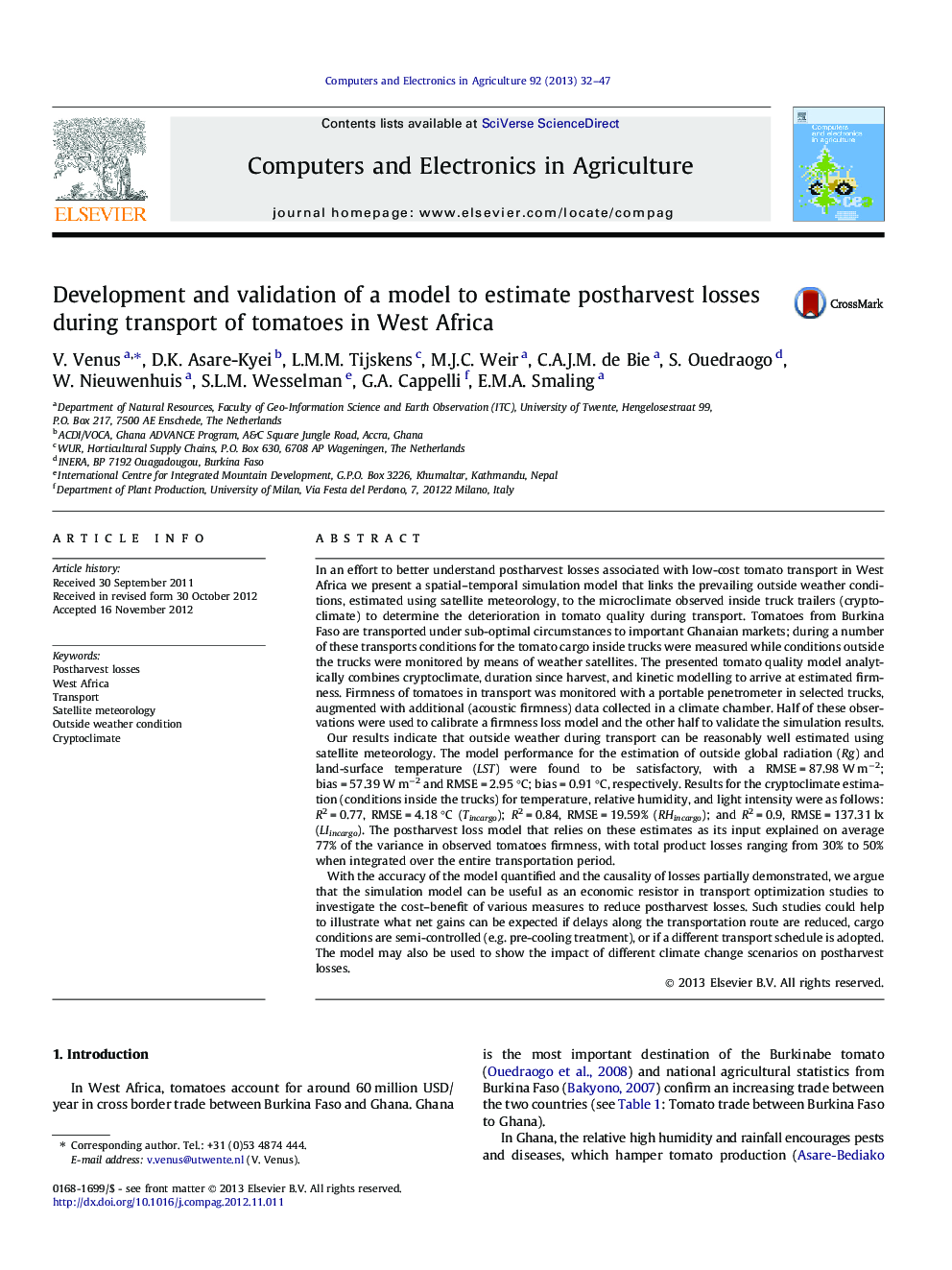| Article ID | Journal | Published Year | Pages | File Type |
|---|---|---|---|---|
| 84366 | Computers and Electronics in Agriculture | 2013 | 16 Pages |
In an effort to better understand postharvest losses associated with low-cost tomato transport in West Africa we present a spatial–temporal simulation model that links the prevailing outside weather conditions, estimated using satellite meteorology, to the microclimate observed inside truck trailers (cryptoclimate) to determine the deterioration in tomato quality during transport. Tomatoes from Burkina Faso are transported under sub-optimal circumstances to important Ghanaian markets; during a number of these transports conditions for the tomato cargo inside trucks were measured while conditions outside the trucks were monitored by means of weather satellites. The presented tomato quality model analytically combines cryptoclimate, duration since harvest, and kinetic modelling to arrive at estimated firmness. Firmness of tomatoes in transport was monitored with a portable penetrometer in selected trucks, augmented with additional (acoustic firmness) data collected in a climate chamber. Half of these observations were used to calibrate a firmness loss model and the other half to validate the simulation results.Our results indicate that outside weather during transport can be reasonably well estimated using satellite meteorology. The model performance for the estimation of outside global radiation (Rg) and land-surface temperature (LST) were found to be satisfactory, with a RMSE = 87.98 W m−2; bias = 57.39 W m−2 and RMSE = 2.95 °C; bias = 0.91 °C, respectively. Results for the cryptoclimate estimation (conditions inside the trucks) for temperature, relative humidity, and light intensity were as follows: R2 = 0.77, RMSE = 4.18 °C (Tincargo); R2 = 0.84, RMSE = 19.59% (RHincargo); and R2 = 0.9, RMSE = 137.31 lx (LIincargo). The postharvest loss model that relies on these estimates as its input explained on average 77% of the variance in observed tomatoes firmness, with total product losses ranging from 30% to 50% when integrated over the entire transportation period.With the accuracy of the model quantified and the causality of losses partially demonstrated, we argue that the simulation model can be useful as an economic resistor in transport optimization studies to investigate the cost–benefit of various measures to reduce postharvest losses. Such studies could help to illustrate what net gains can be expected if delays along the transportation route are reduced, cargo conditions are semi-controlled (e.g. pre-cooling treatment), or if a different transport schedule is adopted. The model may also be used to show the impact of different climate change scenarios on postharvest losses.
► We simulate postharvest losses in tomatoes, as they are transported between two West African countries. ► Conditions in trucks were linked to ¼ hourly geo-stationary satellite observations (MSG/SEVIRI). ► Results indicate we can accurately model the cryptoclimate conditions of the cargo; Tincargo r2 = 0.77 RMSE = 4.18 °C, RHincargo r2 = 0.84 RMSE = 19.59%, LIincargo r2 = 0.9 RMSE = 137.31 Lux. ► The tomato firmness model explained 77% of the variance observed during transports (r2 = 0.92 climate chamber).
